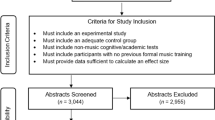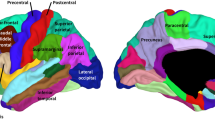Abstract
Three questions are raised with respect to the use of sign language as an alternative system of communication for nonverbal autistic children. First, does teaching a child to sign facilitate speech development? The data suggest that following simultaneous communication training, mute children are not likely to learn to talk; however, a combination of simultaneous communication training and separate vocal training may have a synergetic effect on speech development. In contrast, children who initially have good verbal imitation skills apparently show gains in speech following simultaneous communication training alone. Second, what is the upper limit of sign acquisition? Data suggest that abstract concepts, syntax, and generative skills can be taught. Procedures used in the operant conditioning of speech may prove useful in training complex signing skills. Third, does sign acquisition result in a general improvement in adaptive functioning? It appears that following sign training, some children do show increases in spontaneous communication, decreases in self-stimulatory behavior, and improvement in social skills. However, these outcomes are often difficult to interpret. Some data are described that help clarify the relationship between sign training and general behavioral improvement.
Similar content being viewed by others
Reference notes
Dores, P., & Carr, E. G.Teaching sign language to psychotic children: Assessing simultaneous communication. Paper presented at the meeting of the American Psychological Association, New York, September 1979.
Creedon, M. P.Language development in nonverbal autistic children using a simultaneous communication system. Paper presented at the biennial meeting of the Society for Research in Child Development, Philadelphia, March 1973.
Carr, E. G., & Kologinsky, E.Teaching psychotic children to use sign language: Development of descriptive generative sentences. Paper presented at the meeting of the Association for the Advancement of Behavior Therapy, Chicago, November 1978.
Carr, E. G., & Kologinsky, E.Acquisition of sign language by autistic children. III. Analysis of spontaneous signing. Unpublished manuscript.
References
Baer, D. M., Guess, D., & Sherman, J. Adventures in simplistic grammar. In R. L. Schiefelbusch (Ed.),Language of the mentally retarded. Baltimore: University Park Press, 1972.
Benaroya, S., Wesley, S., Ogilvie, H., Klein, L. S., & Meany, M. Sign language and multisensory input training of children with communication and related developmental disorders.Journal of Autism and Childhood Schizophrenia, 1977,7, 23–31.
Bloom, L., & Lahey, M.Language development and language disorders. New York: Wiley, 1978.
Bonvillian, J. D., & Nelson, K. E. Sign language acquisition in a mute autistic boy.Journal of Speech and Hearing Disorders, 1976,14, 339–347.
Brady, D. O., & Smouse, A. D. A simultaneous comparison of three methods for language training with an autistic child: An experimental single case analysis.Journal of Autism and Childhood Schizophrenia, 1978,8, 271–279.
Carr, E. G., Binkoff, J. A., Kologinsky, E., & Eddy, M. Acquisition of sign language by autistic children. I. Expressive labelling.Journal of Applied Behavior Analysis, 1978,11, 489–501.
Casey, L. O. Development of communicative behavior in autistic children: A parent program using manual signs.Journal of Autism and Childhood Schizophrenia, 1978,8, 45–59.
Chomsky, N.Verbal behavior by B. F. Skinner.Language, 1959,35, 26–58.
Creedon, M. P. (Ed.).Appropriate behavior through communication. Chicago: Michael Reese Medical Center, Dysfunctioning Child Center Publication, 1975.
DeMyer, M. K., Barton, S., DeMyer, W. E., Norton, J. A., Allen, J., & Steele, R. Prognosis in autism: A follow-up study.Journal of Autism and Childhood Schizophrenia, 1973,3, 199–246.
Frisch, S. A., & Schumaker, J. B. Teaching generalized receptive prepositions in retarded children.Journal of Applied Behavior Analysis, 1974,7, 611–621.
Fulwiler, R. L., & Fouts, R. S. Acquisition of American sign language by a non-communicating autistic child.Journal of Autism and Childhood Schizophrenia, 1976,6, 43–51.
Garcia, E., Guess, D., & Byrnes, J. Development of syntax in a retarded girl using imitation, reinforcement, and modelling.Journal of Applied Behavior Analysis, 1973,6, 299–310.
Guess, D., & Baer, D. M. An analysis of individual differences in generalization between receptive and productive language in retarded children.Journal of Applied Behavior Analysis, 1973,6, 311–329.
Guess, D., Sailor, W., & Baer, D. Children with limited language. In R. L. Schiefelbusch (Ed.),Language intervention strategies. Baltimore: University Park Press, 1978.
Hemsley, R., Howlin, P., Berger, M., Hersov, L., Holbrook, D., Rutter, M., & Yule, W. Treating autistic children in a family context. In M. Rutter & E. Schopler (Eds.),Autism: A reappraisal of concepts and treatment. New York: Plenum, 1978.
Hermelin, B., & O'Connor, N.Psychological experiments with autistic children. London: Pergamon Press, 1970.
Knauf, V. H. Meeting speech and language needs for the hearing impaired. In J. Katz (Ed.),Handbook of clinical audiology. Baltimore: Williams & Wilkins, 1972.
Koegel, R. L., & Schreibman, L. Identification of consistent responding to auditory stimuli by a functionally “deaf” autistic child.Journal of Autism and Childhood Schizophrenia, 1976,6, 147–156.
Konstantareas, M. M., Oxman, J., & Webster, C. D. Simultaneous communication with autistic and other severely dysfunctional children.Journal of Communication Disorders, 1977,10, 267–282.
Kovattana, P. M., & Kraemer, H. C. Response to multiple visual cues of color, size, and form by autistic children.Journal of Autism and Childhood Schizophrenia, 1974,4, 251–261.
Lenneberg, E. H.Biological foundations of language. New York: Wiley, 1967.
Lovaas, O. I.The autistic child. New York: Irvington, 1977.
Lovaas, O. I., Koegel, R. L., Simmons, J. Q., & Long, J. S. Some generalization and follow-up measures of autistic children in behavior therapy.Journal of Applied Behavior Analysis, 1973,6, 131–165.
Lovaas, O. I., & Schreibman, L. Stimulus overselectivity of autistic children in a two stimulus situation.Behaviour Research and Therapy, 1971,9, 305–310.
Lovaas, O. I., Schreibman, L., Koegel, R., & Rehm, R. Selective responding by autistic children to multiple sensory input.Journal of Abnormal Psychology, 1971,77, 211–222.
Miller, A., & Miller, E. E. Cognitive-developmental training with elevated boards and sign language.Journal of Autism and Childhood Schizophrenia, 1973,3, 65–85.
Premack, D. Two problems in cognition: Symbolization, and from icon to phoneme. In T. Alloway, L. Krames, & P. Pliner (Eds.),Communication and affect—a comparative approach. New York: Academic Press, 1972.
Pronovost, W., Wakstein, M. P., & Wakstein, D. J. A longitudinal study of the speech behavior and language comprehension of fourteen children diagnosed atypical or autistic.Exceptional Children, 1966,33, 19–26.
Rincover, A., & Koegel, R. L. Setting generality and stimulus control in autistic children.Journal of Applied Behavior Analysis, 1975,8, 235–246.
Rutter, M. Language disorder and infantile autism. In M. Rutter & E. Schopler (Eds.),Autism: A reappraisal of concepts and treatment. New York: Plenum, 1978.
Salvin, A., Routh, D. K., Foster, R. E., & Lovejoy, K. M. Acquisition of modified American sign language by a mute autistic child.Journal of Autism and Childhood Schizophrenia, 1977,7, 359–371.
Schaeffer, B., Kollinzas, G., Musil, A., & McDowell, P. Spontaneous verbal language for autistic children through signed speech.Sign Language Studies, 1977,17, 287–328.
Schopler, E., & Reichler, R. J. Parents as co-therapists in the treatment of psychotic children.Journal of Autism and Childhood Schizophrenia, 1971,1, 87–102.
Schover, L. R., & Newsom, C. D. Overselectivity, developmental level, and overtraining in autistic and normal children.Journal of Abnormal Child Psychology, 1976,4, 289–298.
Schumaker, J., & Sherman, J. A. Training generative verb usage by imitation and reinforcement procedures.Journal of Applied Behavior Analysis, 1970,3, 273–287.
Webster, C. D., McPherson, H., Sloman, L., Evans, M. A., & Kuchar, E. Communicating with an autistic boy by gestures.Journal of Autism and Childhood Schizophrenia, 1973,3, 337–346.
Wilhelm, H., & Lovaas, O. I. Stimulus overselectivity: A common feature in autism and mental retardation.American Journal of Mental Deficiency, 1976,81, 26–31.
Author information
Authors and Affiliations
Rights and permissions
About this article
Cite this article
Carr, E.G. Teaching autistic children to use sign language: Some research issues. J Autism Dev Disord 9, 345–359 (1979). https://doi.org/10.1007/BF01531444
Issue Date:
DOI: https://doi.org/10.1007/BF01531444




